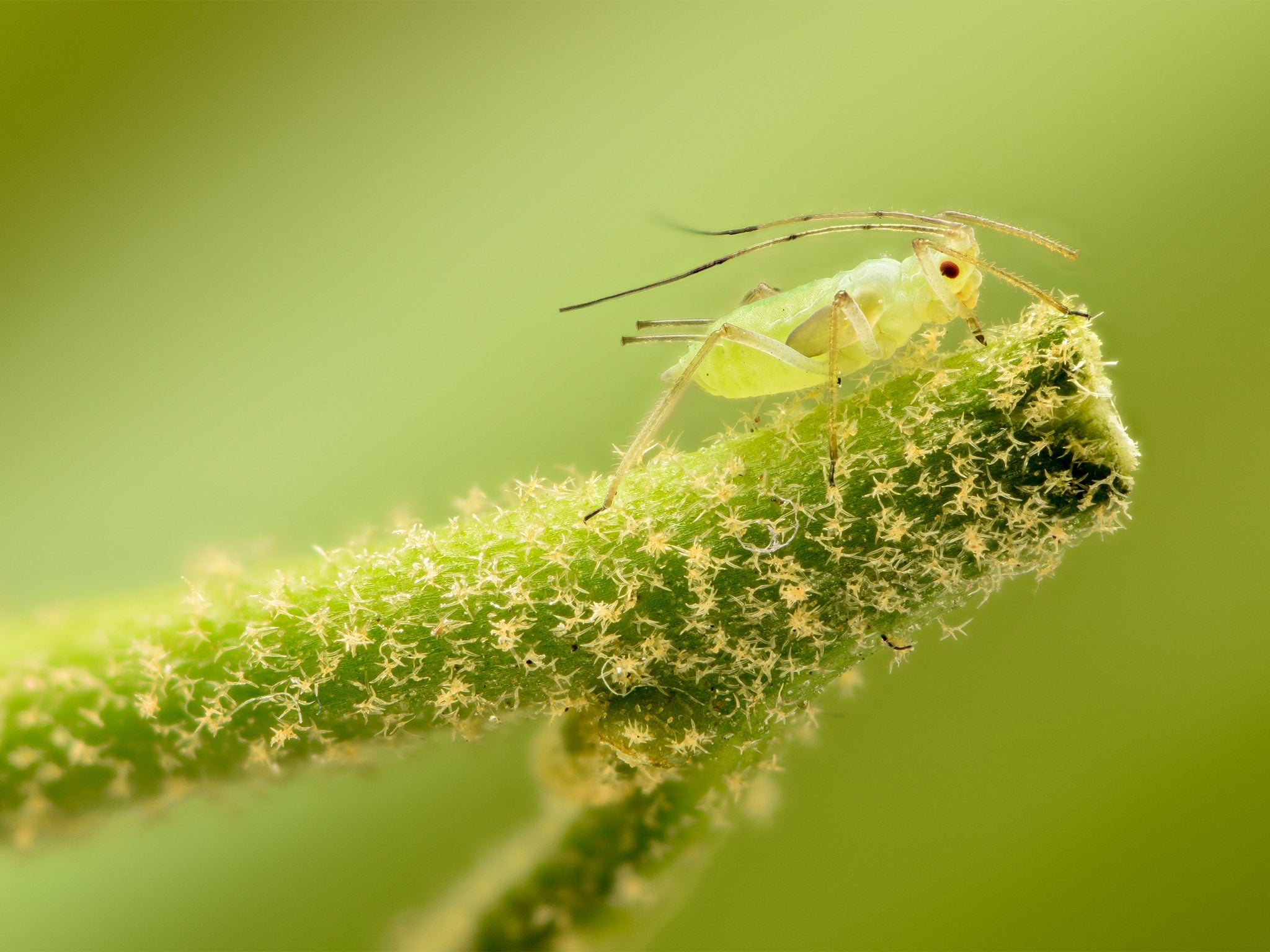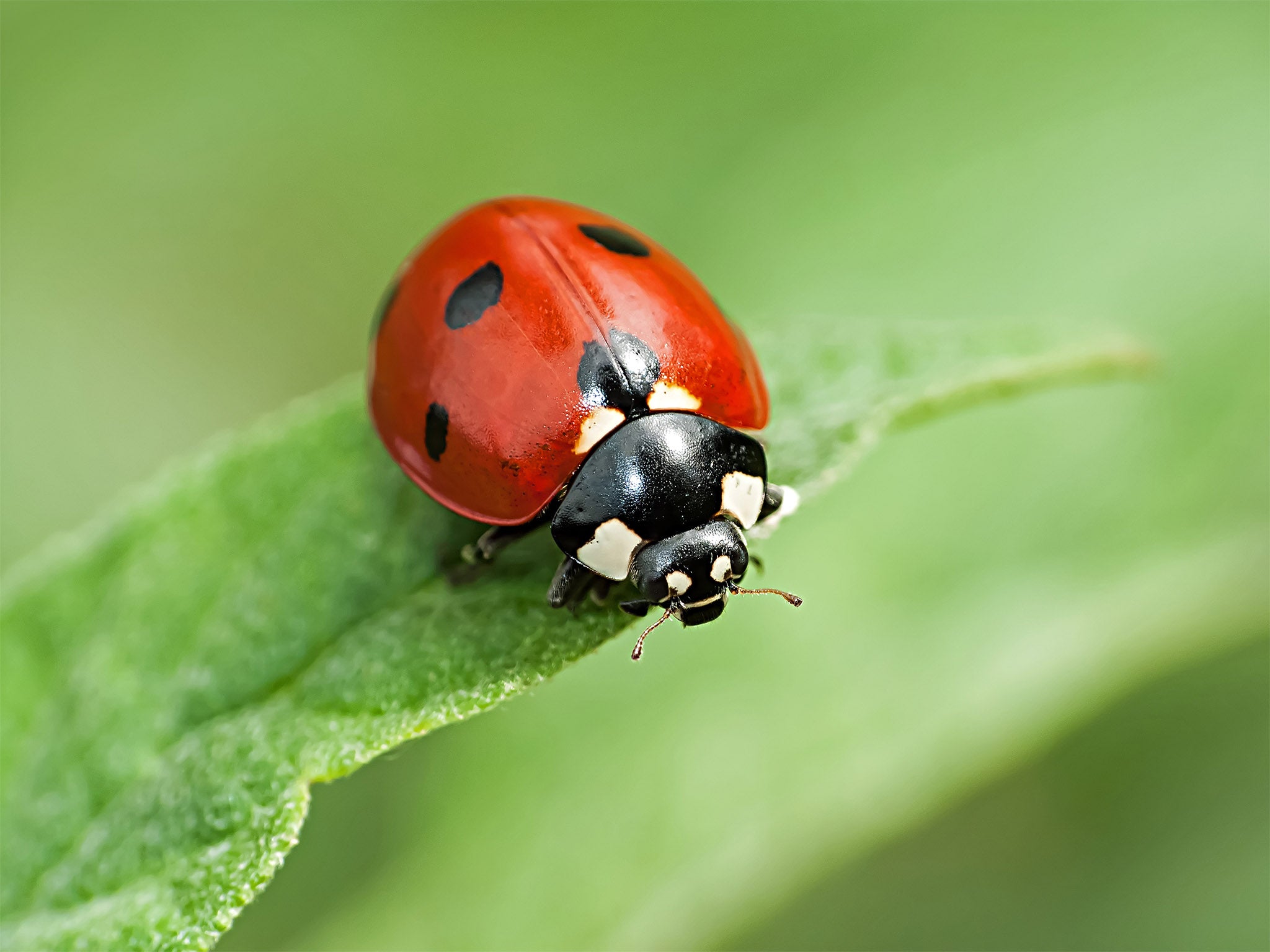Aphid explosion: Why are the skies filled with greenfly and how to get rid of them?
Aphids often appear in swarms around May and June but what risk do they post to plants?

Your support helps us to tell the story
From reproductive rights to climate change to Big Tech, The Independent is on the ground when the story is developing. Whether it's investigating the financials of Elon Musk's pro-Trump PAC or producing our latest documentary, 'The A Word', which shines a light on the American women fighting for reproductive rights, we know how important it is to parse out the facts from the messaging.
At such a critical moment in US history, we need reporters on the ground. Your donation allows us to keep sending journalists to speak to both sides of the story.
The Independent is trusted by Americans across the entire political spectrum. And unlike many other quality news outlets, we choose not to lock Americans out of our reporting and analysis with paywalls. We believe quality journalism should be available to everyone, paid for by those who can afford it.
Your support makes all the difference.The warm, still weather of May is great for us and for many plants and animals, but some of these creatures are a nuisance.
Around this time every year in many parts of the northern hemisphere, people begin complaining about a plague of tiny green insects filling the air. But really, these aphids or greenfly shouldn’t be seen a problem, just a sign of spring.
Each year aphids and other insects are poised, ready to start feeding on plants as soon as the leaf buds open and they start to grow. The aphids that fly in May are sycamore aphids (Drepanosiphum platanoidis) and, as their name suggests, they feed on sycamore trees and a few other tree species.
They don’t attack garden plants or crops, but if a large group develop on a tree they can reduce its growth. A full-sized tree can host an estimated 2.5 million aphids.
Sycamore aphids and other insects often grow quickly in the spring as the plants at this time of year are highly nutritious and have fewer defences.
You can see evidence of aphid feeding in honeydew, the sugary waste of their feeding, which covers lower leaves (and cars) and provides food for flies and other insects. Eventually the honeydew will become covered with sooty mould.
The rapid growth of aphid numbers is because the species doesn’t rely on sex for reproduction. The all-female aphids reproduce “parthenogenetically”, meaning without the need for their eggs to be fertilised by males. Unlike most insects, aphids also give birth to live (all female) young.
In fact, you can dissect an aphid and find her unborn daughters within her body and her unborn granddaughters within them, something known as the telescoping of generations. If all these offspring stayed in the same place they would get overcrowded so, when a group begins to get too large, the aphids take flight, dispersing to other leaves, trees or even further afield.
They are not strong fliers and are very much at the mercy of the wind, so many probably perish.
In the UK there is an aphid-forecasting scheme run at Rothamsted Research in Harpenden. The survey monitors airborne aphids and provides an early warning system for crops that are at risk.
In May 2018, the sycamore aphid was the most abundant type found, but in previous years we have seen mass flights of other species that have stopped factories and other workplaces for a time and, worse still, even caused cricket matches to be abandoned.

Most species of aphids have a similar life-history. While the sycamore aphid does not usually cause any serious harm, other species attack garden plants and crops. This is only really a problem when aphid numbers get too large.
Usually, weather and natural enemies such as ladybirds, hoverflies, lacewings and many species of parasitic wasp keep the aphid numbers in check.
In some crops, the aphids can also cause damage by spreading plant viruses such as barley yellow dwarf virus or potato leafroll virus. Gardeners worried about their plants need to keep a watch for aphid infestations and can reduce the chances of attack, by encouraging ladybirds and other natural enemies. Natural enemies of aphids and other plant pests usually prefer habitats with flowers (for nectar and pollen) and permanent vegetation (for passing the winter).
If the aphids get out of hand, they can often be removed from plants by washing them with soapy water. There is also a range of insecticides available if wanted, but unless they are used carefully according to the label instructions these can have an effect on other species as well as aphids.
is a senior lecturer in Ecology at Newcastle University. This article was originally published on TheConversation.com
Join our commenting forum
Join thought-provoking conversations, follow other Independent readers and see their replies
Comments